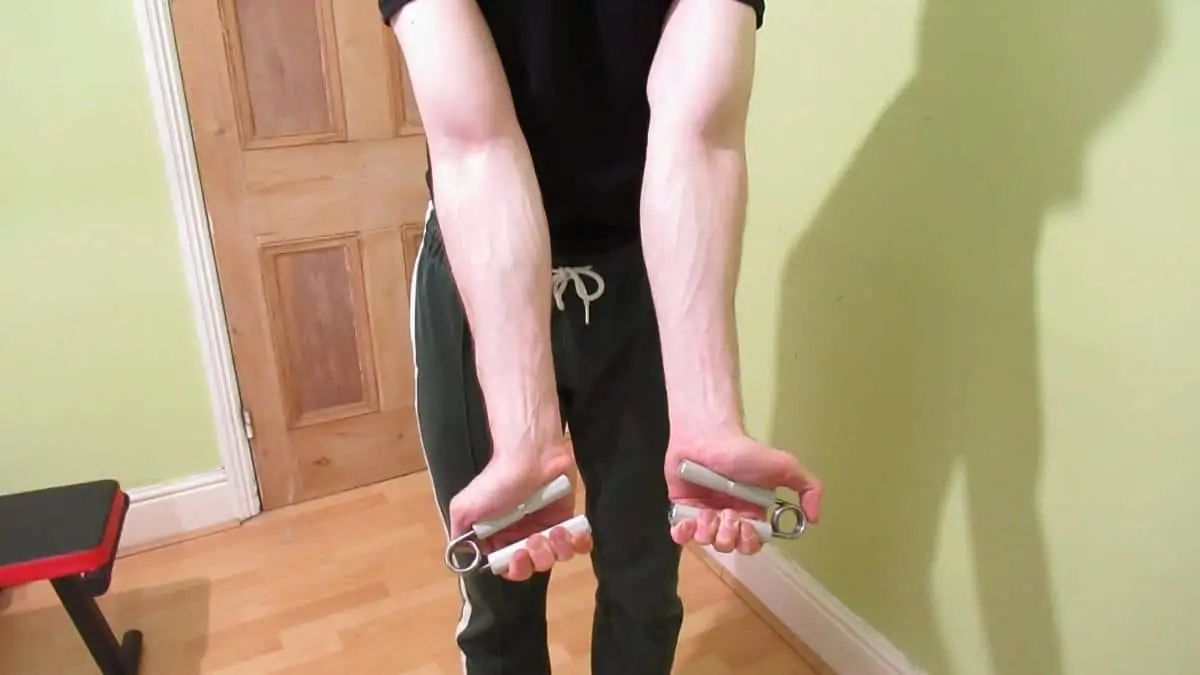While forearm veins can be a sign of health problems such as high blood pressure and stress, improving their forearm vascularity is a physique enhancement that many bodybuilders and strength trainees strive for.
In this guide, you’ll learn precisely how to get vascular forearms, the specific exercises that will get your veins to pop out, and also whether or not supposed vascularity boosting supplements are worth it.
Related post: how to increase forearm size
How to get forearm veins
Learn how to get veiny forearms naturally—step by step—before you even think about experimenting with supplements or the latest fitness fad.
Train your forearms directly
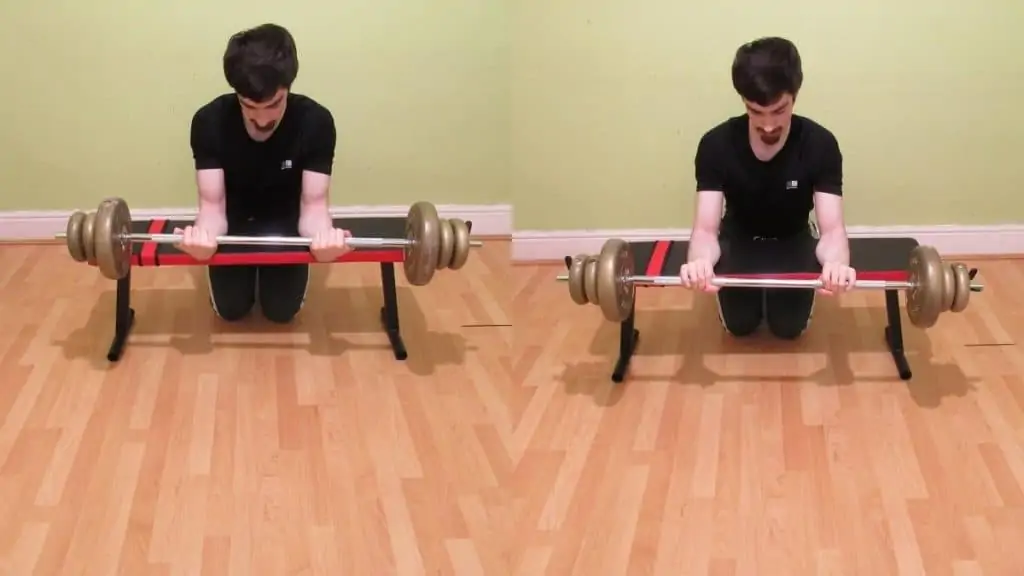
You might already do this, but many lifters don’t. When you train a muscle directly, you naturally increase blood flow to that area. This results in a better muscle pump during your workout, and, over time, this pump can turn into more visible vascularity if you train consistently.
Training your lower arms directly will also increase your muscle mass. This extra size will, in turn, make your forearms more prominent, meaning that the veins will look more impressive when you do get them to pop.
Try BFR training

Forearm blood flow restriction training involves wrapping occlusion bands underneath your elbows and then performing high rep exercises like wrist curls. Since the muscles become engorged with blood during this training protocol, you can start to see the veins of the forearm pop out almost immediately.
Just make sure that you don’t wrap the occlusion bands too tightly. We want to restrict blood flow, not cut it off completely.
Alternatively, you can get occlusion cuffs that have preset tightness levels so that you can apply the same pressure to both arms and avoid creating muscle imbalances.
Decrease your body fat levels
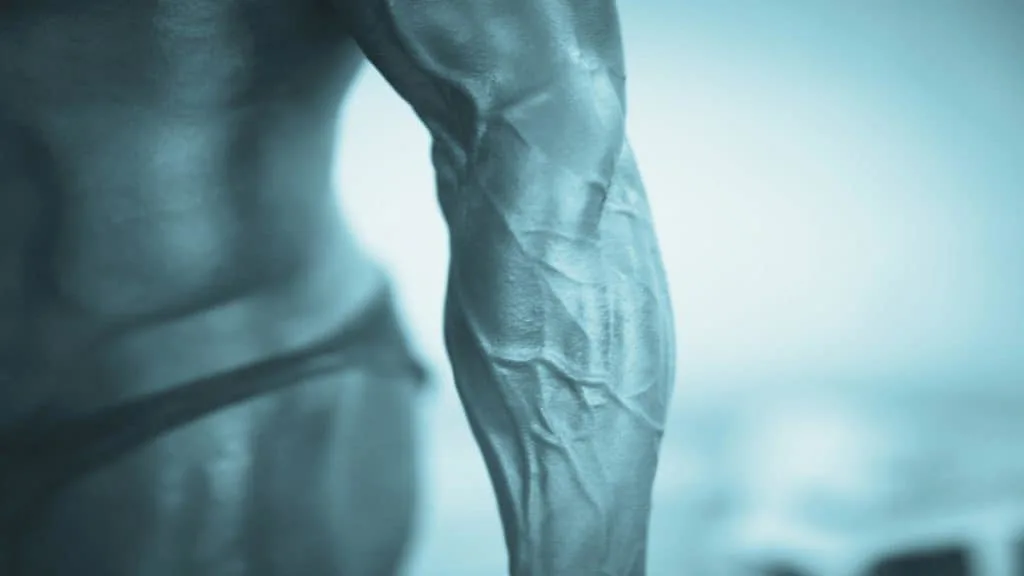
Many people have impressive levels of muscle mass. However, due to excessive levels of adipose tissue (body fat), they never get to see the definition that their muscles naturally have.
For most lifters, getting forearm veins can be as simple as bringing their body fat down. The best way to accomplish this fat reduction is via a combination of moderate calorie restriction, weight training, and aerobic exercise.
Do cardiovascular exercise
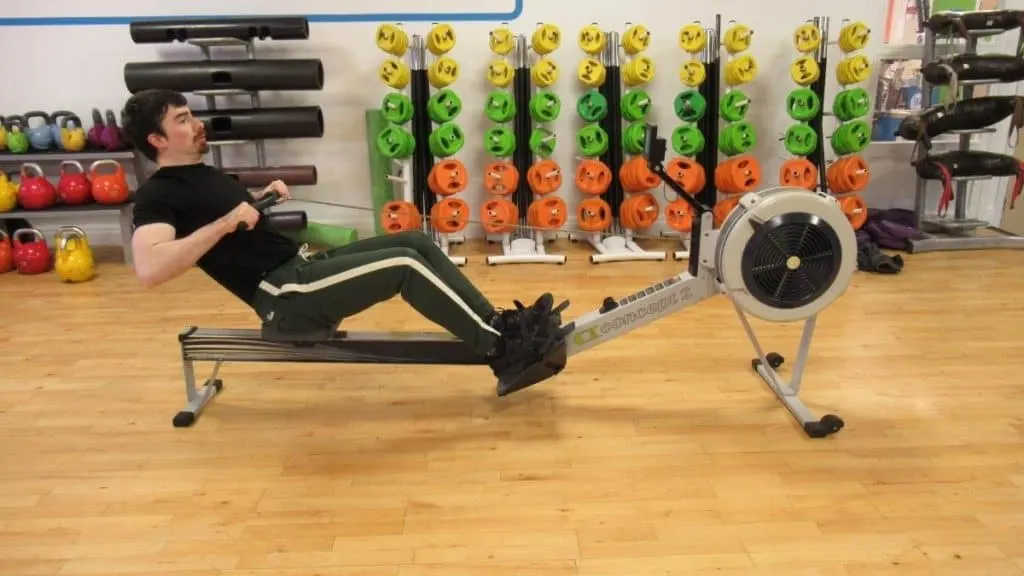
Running and other forms of cardiovascular activity probably aren’t the first things that come to mind when you’re figuring out how to get veiny forearms.
However, cardio burns calories, and if you watch your diet as well—and by that, I mean avoiding obvious junk food—aerobic exercise can help you to lose weight by putting your body in a caloric deficit. A calorie deficit is where your body expends more energy than it takes in, meaning that your overall body mass decreases, which in turn promotes vascular forearms.
Top exercises for getting veiny forearms
There’s more to increasing your forearm vascularity than just lifting weights. However, selecting the right exercises can get you to your goal faster by isolating the target muscles.
Wrist curls
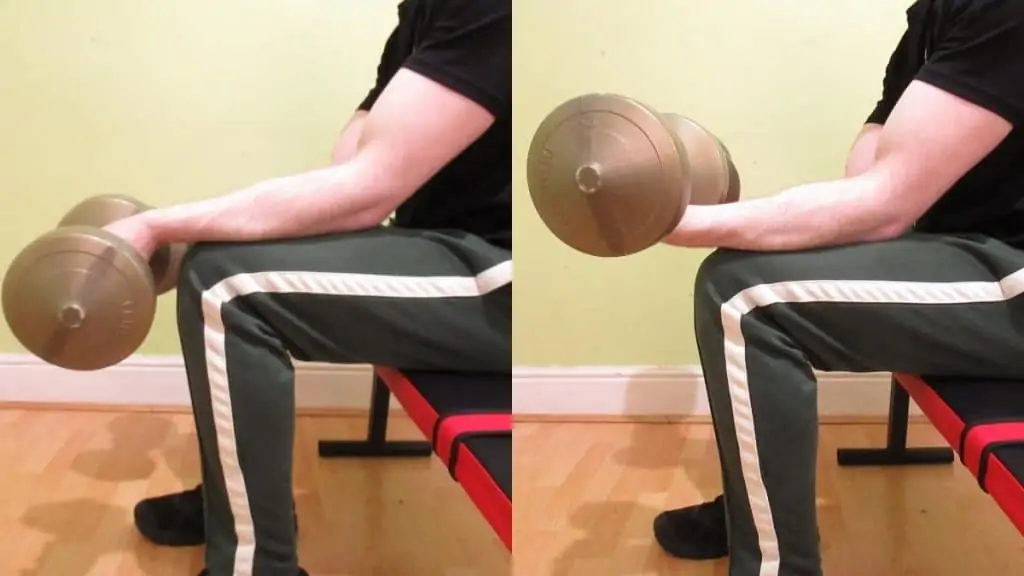
Wrist curls are a legendary forearm drill—and for good reason. They work both the forearm flexors and the forearm extensors, which results in extremely balanced development.
Also, due to the dynamic nature of the exercise, which is to say the repeated stretching and contractions, wrist curls are very effective for getting a good pump in the gym. And as we know, the improved blood flow courtesy of the pump usually results in better vascularity.
Hand gripper
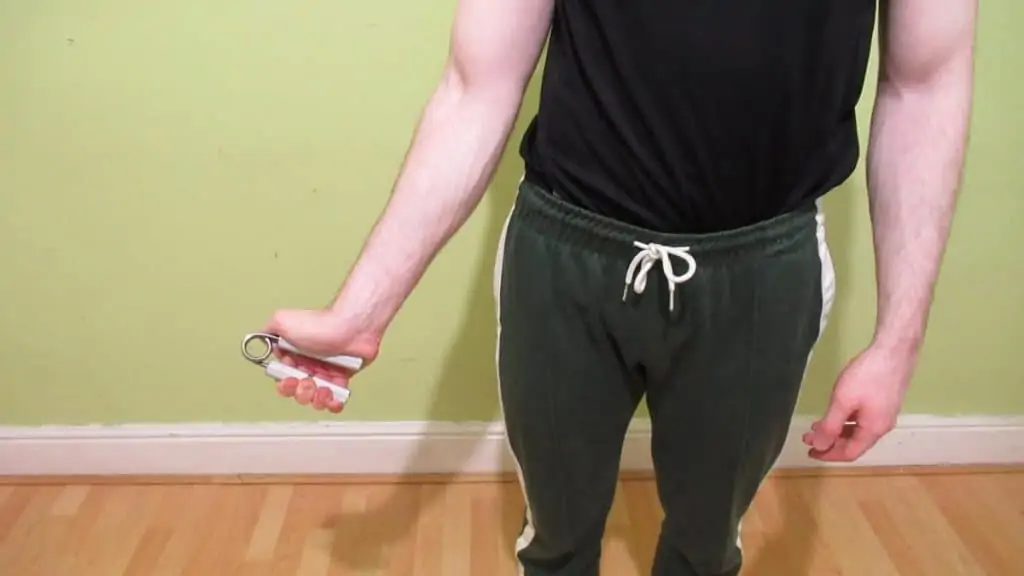
If you want vascular forearm muscles, but don’t want to go to the gym to train them, then investing in a hand gripper will allow you to work your lower arms at home.
Again, this is one of those exercises that really make the veins of the forearm pop after just a few sets because of the repeated muscular contractions.
However, grip trainers, as the name suggests, will also strengthen your grip if you use them correctly. [1] Not only will this new grip strength make everyday tasks like gardening and cooking easier, but it will also help you to get more from your compound lifts like deadlifts and pull-ups.
Loaded carries
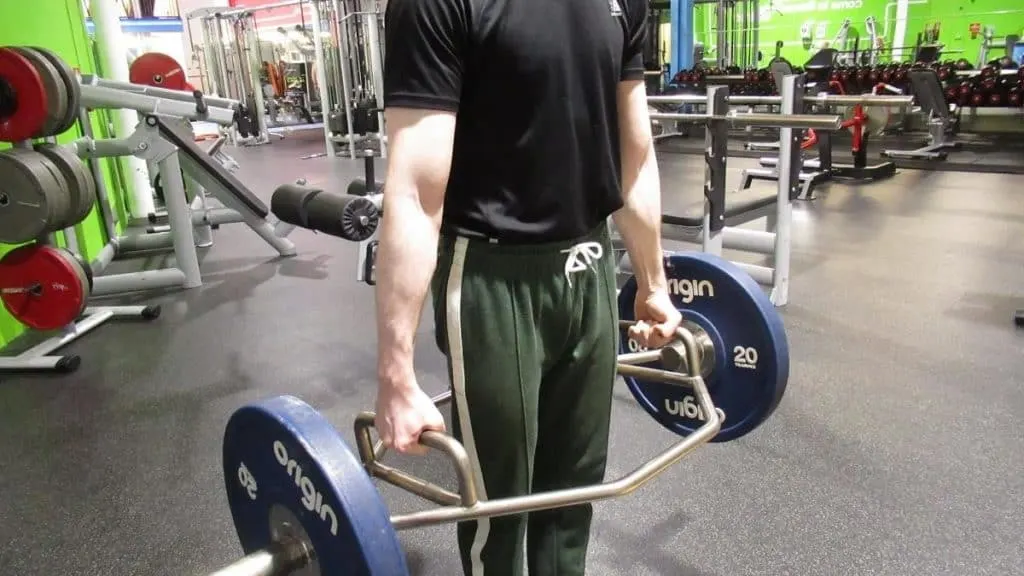
Weighted carries involve picking up heavy dumbbells or a trap bar and then walking with it up and down the gym for 30-45 seconds. These isometric drills can make your forearm veins really pop out because the flexors are forced to contract for a prolonged period of time, which again increases the blood flow to your lower arms. [2]
Bicep curls
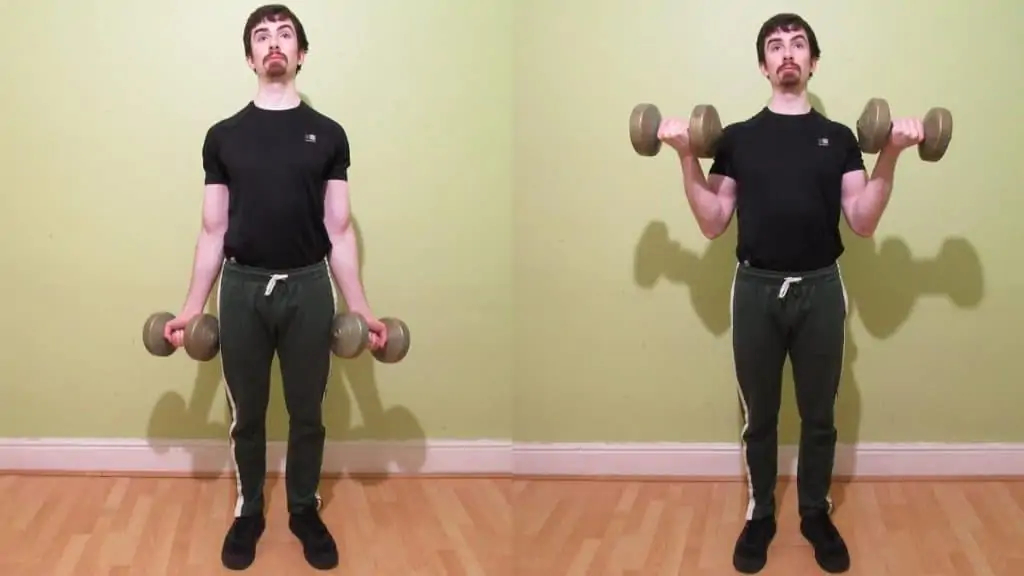
Curls are the undisputed champion of building well-developed biceps. However, the forearms also get a great workout as a secondary muscle group. After all, something has the hold the dumbbell or barbell while you curl it!
As such, many lifters naturally figure out how to get vascular forearms simply by training their biceps. In other words, it happens to them by mistake. And do you know what that means?
It means that they got veiny forearms through consistency—it was a perk of their training. So there’s definitely something to be said for focusing on the bigger picture and letting the vascularity take care of itself.
Do some people naturally have more vascular forearms than others?

Yes, some people are genetically predisposed to having more prominent forearm veins than others.
Note, however, that vascularity is often assessed on a per muscle group basis. So while someone could have really veiny forearms, they might not have very impressive calf veins, for example.
Also, be aware that some individuals might simply have more noticeable veins due to their genetic predisposition (or hard work) for being able to maintain a low body fat percentage.
Are supplements useful for increasing your forearm vascularity?

Supplements are no guarantee of vascularity, especially if your diet is unhealthy and you’re not lifting weights. In other words, they won’t do the work for you.
However, a study from July 2020 does suggest that L-citrulline can improve vascular function. [3] Previous research from 2017 also backs this up, reminding us that citrulline supplementation increases levels of l-arginine in the blood, as well as overall exercise performance. [4]
So while these studies didn’t look at vascularity in the way that a bodybuilder would, there is decent evidence to suggest that you can benefit from taking these supplements because good vascular function, as observed in the first study, can enhance your visible vascularity.
Conclusion: How to get veiny forearms safely

Now that we’ve learned how to get forearm veins, it’s time to decide on the next steps to take. First and foremost, make sure to consume enough quality protein so that you can build lean muscle mass. After all, veins without the accompanying muscle mass don’t look all that impressive from a bodybuilding perspective.
Second, train your forearms directly. It might not be fun to do wrist curls after a big back workout, but those extra 10-15 minutes will pay divides in forearm vascularity down the road. Yet, if you don’t fancy training your forearms at the gym, then you can get comparable results by using a hand gripper at home.
Also, make sure to be honest with yourself. If you have excess body fat, then try to trim down before looking at alternative methods for getting veiny forearms.
References
- Rus, R., Ponikvar, R., Kenda, R. B., & Buturovic-Ponikvar, J. (2005). Effects of Handgrip Training and Intermittent Compression of Upper Arm Veins on Forearm Vessels in Patients With End-stage Renal Failure. Therapeutic Apheresis and Dialysis, 9(3), 241–244. https://doi.org/10.1111/j.1774-9987.2005.00263.x
- Leaf, D. A., MacRae, H. S.-H., Grant, E., & Kraut, J. (2003). Isometric Exercise Increases the Size of Forearm Veins in Patients with Chronic Renal Failure. The American Journal of the Medical Sciences, 325(3), 115–119. https://doi.org/10.1097/00000441-200303000-00003
- Figueroa, A., Jaime, S. J., Morita, M., Gonzales, J. U., & Moinard, C. (2020). l-Citrulline Supports Vascular and Muscular Benefits of Exercise Training in Older Adults. Exercise and Sport Sciences Reviews, 48(3), 133–139. https://doi.org/10.1249/jes.0000000000000223
- Figueroa, A., Wong, A., Jaime, S. J., & Gonzales, J. U. (2017). Influence of L-citrulline and watermelon supplementation on vascular function and exercise performance. Current Opinion in Clinical Nutrition & Metabolic Care, 20(1), 92–98. https://doi.org/10.1097/mco.0000000000000340

